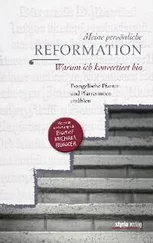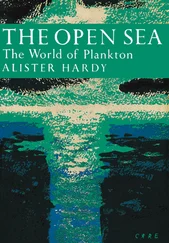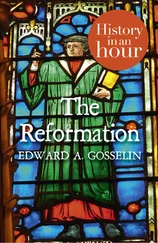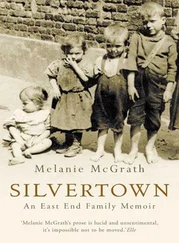It is interesting to note that early Catholic criticisms of Luther failed to pick up on the importance of his doctrine of justification by faith alone. Most critics of Luther in the early 1520s portrayed him as repeating the discredited ideas of John Wycliffe and Jan Hus that were subsequently condemned by the Council of Constance. Very few realized that Luther was actually articulating a coherent theological vision, with the potential to rival that of any of the great Catholic theological systems.
The English Catholic theologian John Fisher, bishop of Rochester, realized the significance of Luther. In May 1521, Fisher identified three central themes which he believed lay at the core of Luther’s theology: the denial of papal primacy, the affirmation of justification by faith alone, and the restriction of doctrinal authority to Scripture alone. Fisher rightly suggested that these core theological themes of justification by faith and the sole authority of the Bible lay at the heart of Luther’s reforming program, and that everything else was erected on this foundation.
Receptivity Toward the Reformation: The Case of Lollardy
The Reformation did not bring a church into being from nowhere; throughout Europe, it built upon existing foundations. In this section, we shall look at how the English movement known as “Lollardy,” though not Lutheran in any meaningful sense of the word, prepared the ground for a positive reception of Luther’s ideas in England.
Recent studies have demonstrated the complexity of Lollardy, making generalizations concerning its basic beliefs considerably more hazardous than was once the case. For example, although some Lollards were opposed to the idea of purgatory, most appear to have been content to allow it to remain; serious opposition to the concept in England appears to have gained momentum only with the execution of John Frith over the question in 1533. However, a cluster of basic attitudes which appear to have been widespread within the movement can be summarized as follows. Lollards, in general, believed that:
1 The Bible ought to be available in the vernacular.
2 The veneration of images is unacceptable.
3 The practice of pilgrimage is open to serious criticism.
4 Every layperson is a priest.
5 The pope exercises excessive authority.
6 Christ’s presence in the communion bread is purely spiritual (as opposed to the medieval doctrine of transubstantiation; see p. 207).
In one sense, this list of beliefs could be argued to be little more than a form of grievance literature. Yet it points to certain attitudes, prevalent within Lollard circles, which gave rise to an enhanced receptivity toward Lutheran ideas when these began to make their appearance in England in the 1520s. For Lutheran doctrines resonated with these attitudes. For example, Luther’s doctrine of the “priesthood of all believers” was consonant with the Lollard dislike of priests and the Lollard belief that all the laity had a right to call themselves priests. Similarly, the Lutheran doctrine of justification by faith seemed (at least, to the Lollards) to imply that there was no longer any need for popes, priests, or the institutional church – all of which they cordially detested – in the process of salvation. Each individual could make peace with God, without dragging the hated ecclesiastical hierarchy into the matter.
Movements similar to Lollardy appear to have existed in many parts of Europe, providing fertile seed-beds in which the ideas of the Reformation could germinate and take root. The Lollards developed nothing like the sophisticated doctrines of the priesthood of all believers or justification by faith alone. At best, they were possessed of attitudes, or a general outlook, which was severely critical of the church of their day. But Lutheran ideas, when they came, made a lot of sense to Lollardy. They resonated with these attitudes, reinforced their arguments, adding intellectual sophistication to Lollard enthusiasm and giving a new theological foundation to their criticisms of the English church.
This, then, is a brief overview of the pressures building up within the late medieval church. Instability was on the increase. It is clear that some kind of shake-up was inevitable. In the end, it took the form of the Reformation, as we now know it. A significant additional element within this process of destabilization of existing medieval religious beliefs and practices was the rise of Renaissance humanism. It was not long before the new methods of humanism were raising serious questions about some aspects of the doctrinal heritage of the medieval church. We shall explore this development in the following chapter.
1 Bagchi, David V. N. Luther’s Earliest Opponents: Catholic Controversialists, 1518–25. 2nd ed. Minneapolis, MN: Fortress Press, 2009.
2 Bailey, Michael. “The Disenchantment of Magic: Spells, Charms, and Superstition in Early European Witchcraft Literature.” American Historical Review 111 (2006): 383–404.
3 Barbier, Frédéric. Gutenberg’s Europe: The Book and the Invention of Western Modernity. Malden, MA: Polity Press, 2016.
4 Bernard, George W. The Late Medieval English Church: Vitality and Vulnerability before the Break with Rome. New Haven, CT: Yale University Press, 2012.
5 Biow, Douglas. On the Importance of Being an Individual in Renaissance Italy: Men, Their Professions, and Their Beards. Philadelphia, PA: University of Pennsylvania Press, 2015.
6 Bynum, Caroline Walker. Christian Materiality: An Essay on Religion in Late Medieval Europe. New York, NY: Zone Books, 2015.
7 Christman, Robert J. Doctrinal Controversy and Lay Religiosity in Late Reformation Germany. Leiden: Brill, 2012.
8 Close, Christopher W. The Negotiated Reformation: Imperial Cities and the Politics of Urban Reform, 1525–1550. Cambridge: Cambridge University Press, 2009.
9 Cohen, Walter. “The Rise of the Written Vernacular: Europe and Eurasia.” PMLA 126, no. 3 (2011): 719–29.
10 Copenhaver, Brian. Magic in Western Culture: From Antiquity to the Enlightenment. Cambridge: Cambridge University Press, 2015.
11 Delumeau, Jean. Catholicism between Luther and Voltaire. London: Burns & Oates, 1977.
12 Duffy, Eamon. The Stripping of the Altars: Traditional Religion in England c. 1400–c. 1580. New Haven, CT: Yale University Press, 1992.
13 Duffy, Eamon. The Voices of Morebath: Reformation and Rebellion in an English Village. New Haven, CT: Yale University Press, 2001.
14 Edwards, Mark U. Printing, Propaganda and Martin Luther. Minneapolis, MN: Fortress Press, 2005.
15 Hillman, Jennifer. Female Piety and the Catholic Reformation in France. London: Routledge, 2015.
16 Hornbeck, J. Patrick, ed. A Companion to Lollardy. Leiden: Brill, 2016.
17 Johnson, Ian. The Middle English Life of Christ: Academic Discourse, Translation, and Vernacular Theology. Turnhout: Brepols Publishers, 2013 .
18 Katajala-Peltomaa, Sari. Lived Religion and the Long Reformation in Northern Europe c. 1300–1700. Leiden: Brill, 2017.
19 Klaassen, Frank F. The Transformations of Magic: Illicit Learned Magic in the Later Middle Ages and Renaissance. University Park, PA: Pennsylvania State University Press, 2013.
20 Lambert, Malcolm. Medieval Heresy: Popular Movements from the Gregorian Reform to the Reformation. 3rd ed. Oxford: Blackwell, 2002.
21 Laursen, John Christian, Cary J. Nederman, and Ian Hunter. Heresy in Transition: Transforming Ideas of Heresy in Medieval and Early Modern Europe. London: Routledge, 2016.
22 Lutton, Robert. Lollardy and Orthodox Religion in Pre-Reformation England: Reconstructing Piety. Woodbridge, ON: Royal Historical Society in association with the Boydell Press, 2011.
Читать дальше
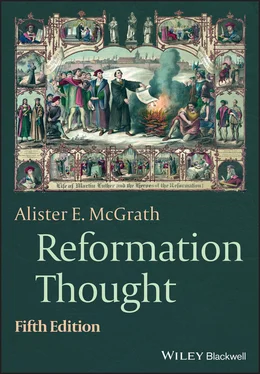
![О Генри - Возрождение Каллиопы [The Reformation of Calliope]](/books/407342/o-genri-vozrozhdenie-kalliopy-the-reformation-of-c-thumb.webp)


